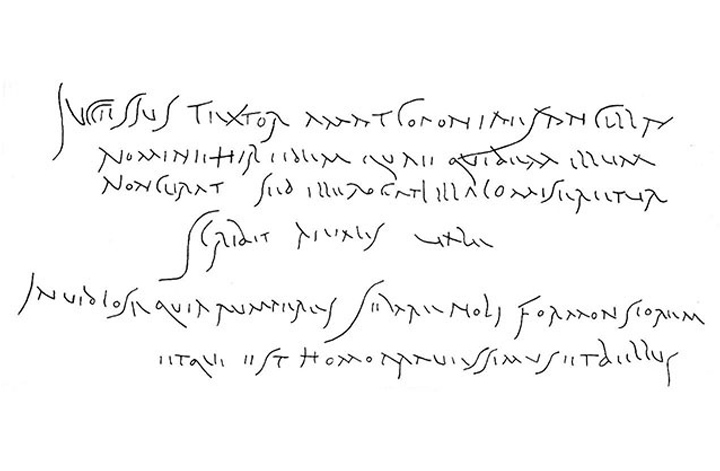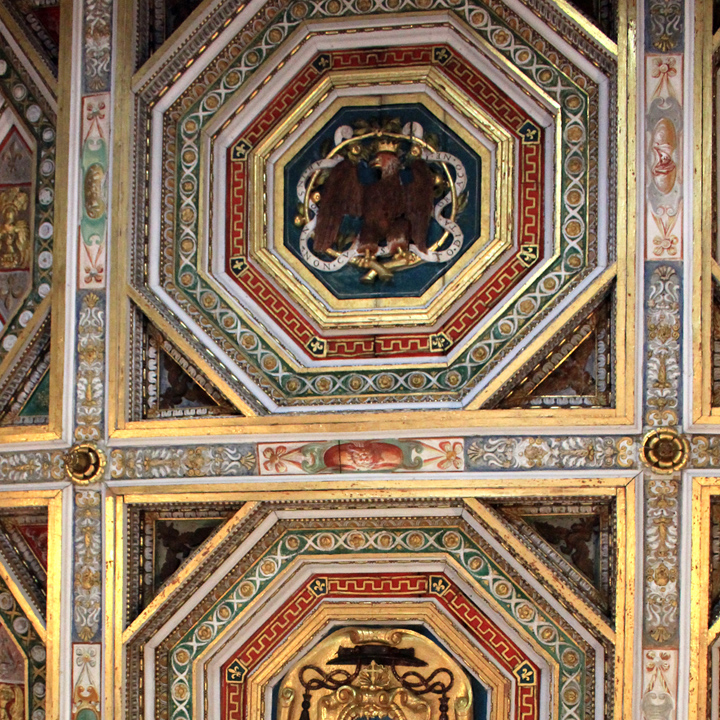
Whoever said the ancient world was boring clearly can’t read Latin!
Anyone who’s spent time traveling knows that Latin inscriptions come a dime a dozen. In Europe pretty much every building and every street corner has an inscription of varying age, but if you look around you you’ll find them on every continent in the world!
Okay fine, not in Antarctica (I think?), but certainly the other six. For those of you trying to remember the list, that’s North America, South America, Europe, Asia, Africa, and Australia.
Some of these inscriptions are ancient, some of them medieval, some modern.
This really isn’t surprising when you think about it, since Latin was the language of the Roman Empire, and remained the lingua franca (Latin for ‘Frankish language – funny story about that) for nearly two thousand years.
In fact, just as you tend to hear English being spoken in many countries as you travel (when I was in Amsterdam I was listening to some French, German, Italian, and Dutch natives speaking to each other in English, the only language they all knew), so too was Latin in its day.
The great thing about this is it means that all human life can be found in Latin.
That’s right, all of it.
We often think of Latin as being about battles and wars, but the truth is the Romans lived a lot like us. They gossiped, went to the shops, lived in apartments, bought and sold, stole, slept around, laughed and cried. And they were not above practical jokes or pettiness.
This is especially good for us because it means if we look just a little closer at the inscriptions we come across, we find some pretty funny quips set in stone (literally). Plus, what better way to learn a little Latin, right?
Here’s a list of the 5 quirkiest Latin inscriptions you can find when traveling in Italy!
The Galleon Fountain
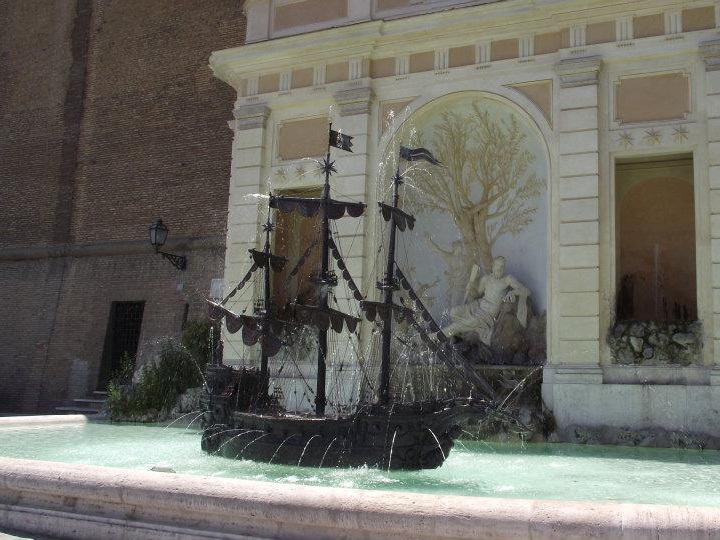
If you go to Rome, a tour of the Vatican gardens is always worth the trip, with over 100 fountains and beautiful pathways. Probably the least known of these fountains is La Fontana dells Galera nei Giardini Vaticani (variously translated as ‘the galleon fountain,’ ‘fountain of the galley’, ‘fountain of the galleon’, ‘fountain of the galley’, ‘galea fountain’ and ‘fountain of the galea’. Nothing like simplicity, right?). This fountain contains a 15-foot lead replica of an early modern papal warship, originally built in the 17th century.
Behind the galley is a scene from the Roman author Ovid’s Metamorphoses in which, after the young Phathon fails to control the chariot of the sun and is killed by Zeus, his nymph sisters weep around his body before their grief turns them to poplar trees, and their tears become the amber of the trees.
Next to this fountain one finds the following rather unexpected inscription:
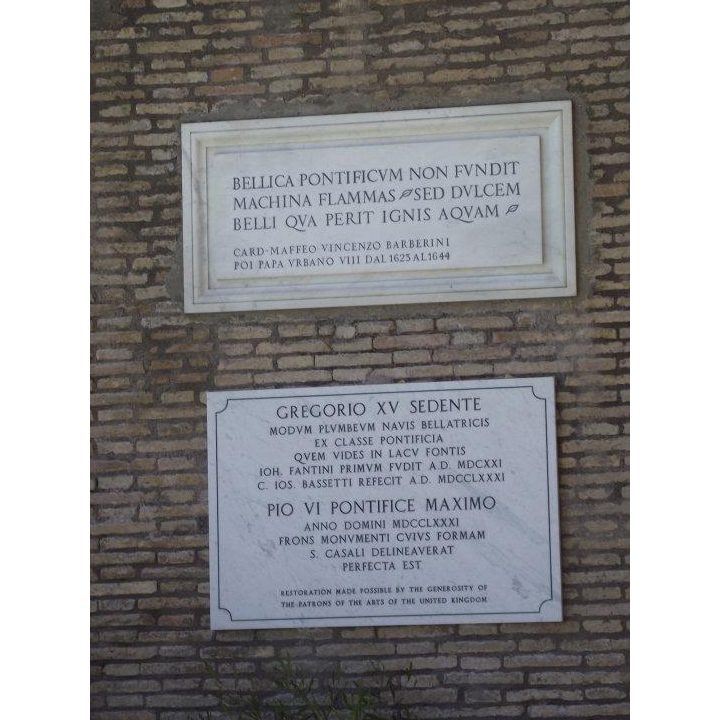
Bellica Pontificum non fundit machina flammas, sed dulcem belli qua perit ignis aquam
Or, in English (the brackets are inserted for clarity):
The war machines of the pontifex (the Pope) doesn’t pour out flames, but (instead) sweet water, in which fire perishes.
Given the irony of the war galley, a symbol of the papal military power in the 17th century, this inscription is a little tongue in cheek at best. But in combination with the scene from Ovid’s Metamorphoses, it becomes a double joke, for the war machines of the Pope are the waters of baptism and redemption, in which the grief of the nymphs is wiped away.
The Piazza del Rotonda, Rome
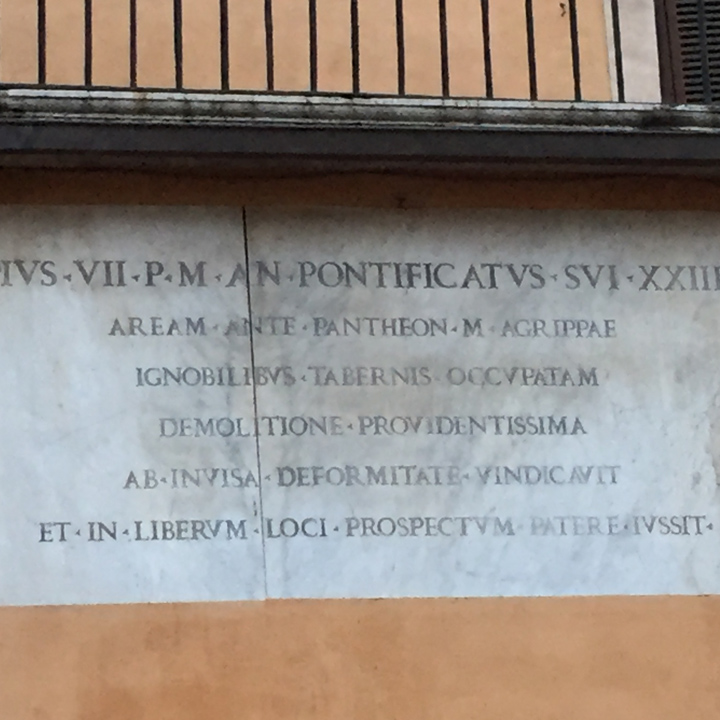
Most people have visited the Pantheon in Rome, and many of those have enjoyed a meal or a drink at one of the cafes in the piazza just in front, called La Piazza del Rotonda. It seems idyllic, but if you know a bit of Latin and look on the wall of the piazza, you’ll find this inscription:
This inscription is on the wall of the Piazza Del Rotonda, directly opposite the Pantheon.
The inscription reads:
Pius VII, P(ontifex) M(aximus) an(no) Pontificatus Sui XXIII aream ante Pantheon Marci Agrippae ignobilius tabernis occupatam demolitione providentissima ab invisa deformitate vindicavit et in liberum loci prospectum patere iussit.
In English this reads:
“Pius VII, Pontifex Maximus (the official title of the Pope), in the 23rd year of his pontificate, freed the area in front of the Pantheon of Marcus Agrippa, occupied by ignoble taverns/businesses, from hated deformity, by a most provident demolition, and ordered to open a free view of the place.”
Pope Eugenius IV, wanting to be loved by the people of Rome, knocked down all the houses and shops in front of the Pantheon and built the piazza and fountain to clear the space in front of it. In this inscription, he’s clearly very proud of himself, though of course, I’m not sure how happy the people who lost their houses were about it. In any case these days we’re probably all pretty grateful to the Pope for giving us a great space to sit back, drink wine, eat pasta, and take photos of the Pantheon for Instagram.
In this inscription, he’s clearly very proud of himself, though of course, I’m not sure how happy the people who lost their houses were about it. In any case these days we’re probably all pretty grateful to the Pope for giving us a great space to sit back, drink wine, eat pasta, and take photos of the Pantheon for Instagram.
A proud nobleman in Florence
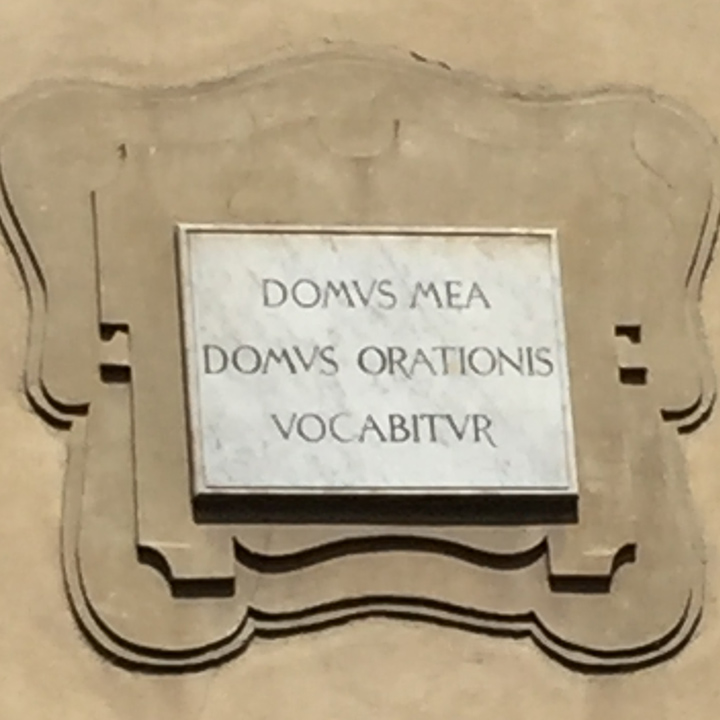
No visit to Florence is complete without a visit to the Palazzo Pitti and the Neighbourhood of Santo Spirito.
Santo Spirito is popular with university students, so you’re bound to find bookshops, hipster bars and people who speak English, for those of you less confident in the native tongue. But once you’ve finished browsing, if you go further up the Via Romana you’ll find the old Roman gate and the entrance to the Boboli Gardens (definitely worth a visit). Here, on the Via Romana, just opposite the gardens you will find this inscription from a pious (and boastful) Italian noble.
Its simple inscription reads “Domus mea domus orationis vocabitur”, or, in English, “My house is called the house of prayer”. Nothing like tooting your own horn, right? I’m surprised he didn’t talk about his humility too!
Villa D’Este: Cardinal’s Bedroom

In the little village of Tivoli in the mountains near Rome, there is the world-famous Villa D’Este, a magnificent and massive villa built in the 1th century by Cardinal D’Este as his private residence. You’ve probably seen photos of the incredible gardens, the fountains (including a fountain that plays the organ) but the house itself is equally impressive.
In the Cardinal’s bedroom one reads the short inscription ab insomni non custodita dracone, or “unattended by a sleepless dragon”.
For Harry Potter fans it might immediately remind you of the motto f Hogwarts, Draco dormiens nunquam titillandus (usually translated as ‘never tickle a sleeping dragon’, but more accurately ‘a sleeping dragon should never be tickled’), and who knows, this could have been the inspiration!
In any case, the inscription is a quote, once again, from Ovid’s Metamorphoses, but here serves as an educated joke to all those who read it, telling them that the garden is free from dangers and free to roam in. It’s also a bit of a show off to do so by quoting Ovid!
A love triangle in Pompeii
Pompeii is probably one of the biggest tourist attractions in Italy, outside Rome itself, of course, and it’s well worth a visit. One thing that always interests visitors is the amount of everyday life that’s still able to be seen because of the complete covering of the city in the eruption of Vesuvius.
One favorite of Pompeii tour guides is to take the tourists through the brothels, complete with paintings of rather lude detail, not to mention physiological impossibilities…
Anyway, it’s in Pompeii that we can see a perfect example of the pettiness I spoke about earlier, in the following graffiti, found on the West wall of caupona, and site of stairs to upper floor, and known as ‘the love story of Successus, Severus and Iris.’:
Successus textor amat coponiaes ancilla(m)
nomine Hiredem quae quidem illum
non curat sed illa com(m)iseretur
scribit rivalis vale
The first reply:
invidiose quia rumperis secare noli formonsiorem
et qui est homo pravissimus et bellus
And, finally:
Dixi scripsi amas Hiredem
quae te non curat SIX() Successo
ut su[p]ra(t) s
Severus
In English these read:
“Successus, a weaver, loves the innkeeper’s slave girl named Iris.
She, however, does not love him.
Still he begs her to have pity on him.
His rival wrote this. Goodbye”
(Answer by Successus) –
“Envious one, why do you get in the way.
Submit to a handsomer man and one who is being treated very wrongly and good looking”
(Answer by Severus) –
“I have spoken. I have written all there is to say.
You love Iris, but she does not love you”
Nice to know that some things never change, right?
And that’s it! These five are not the only quirky or funny inscriptions you’ll find in Italy, of course, but they give a pretty good idea of the kinds of things you can find if you just look a little closer at the bits of Latin you’ll see around you as you go through the old home of the Roman Empire.
Next time you’re in Italy, look out for these, and maybe consider learning a little smattering of Latin before you go–a little Latin can go a long way (think you don’t have time? I taught myself Dutch in two and a half months before I went to Amsterdam)!

